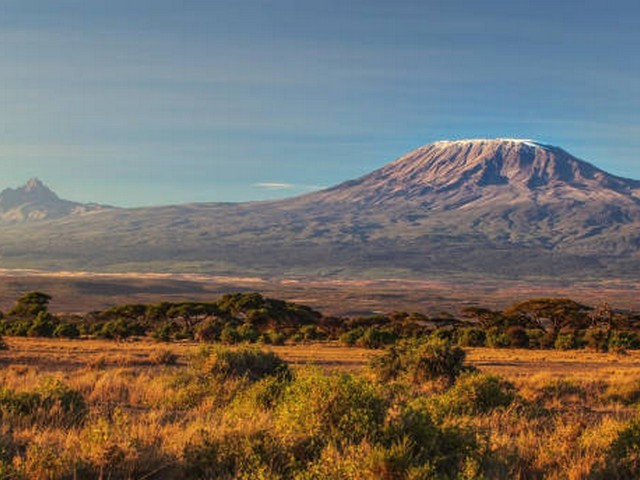How To Stay Safe While Trekking Kilimanjaro Solo
Welcome to the ultimate guide on trekking Mount Kilimanjaro solo, brought to you by the Kilimanjaro Centre for Trekking and Ecotourism (KCTE). Nestled in the heart of Tanzania, Kilimanjaro is not just Africa’s tallest peak but also a symbol of challenge, beauty, and personal achievement. Each year, adventurers from across the globe are drawn to its majestic heights, seeking not only to conquer this iconic mountain but also to discover themselves along the way.
Embarking on a solo trek up Mount Kilimanjaro offers a unique, introspective experience, but it also comes with its own set of challenges. Safety is paramount, and in this post, we’ll explore essential tips, advice, and strategies to ensure you not only enjoy your journey but also return home with triumphant tales and a heart full of memories.
1. Understand the Mountain’s Challenges
The Altitude Factor
Kilimanjaro stands proudly at approximately 5,895 meters (19,341 feet) above sea level. Trekking at such high altitudes comes with the risk of altitude sickness. Symptoms can range from headaches and dizziness to more severe forms of altitude illness. Acclimatization is key. Plan your ascent to allow your body to adapt gradually, which can significantly lower your risk.
Weather Conditions
The mountain’s weather is notoriously unpredictable. Prepare for rapid temperature shifts from one camp to the next. Nights can be freezing, and weather conditions can shift without warning, so appropriate gear is essential.
2. Choosing the Right Route
There are several routes to the summit, each offering different levels of difficulty and scenic beauty. While the Marangu Route is often considered the easiest, the Machame Route might be more rewarding for solo trekkers seeking solitude and challenge. Choose a route that matches your experience and fitness level.
Consider Your Trekking Experience
If you’re a seasoned trekker, you might handle more challenging routes like the Umbwe or Lemosho. Beginners, however, might prefer to stick to the more trodden paths like Marangu or Machame.
3. Essential Gear and Preparation
Gear Up for Success
Your gear can make or break your trek. Essential items include:
- A sturdy backpack
- A high-quality sleeping bag rated for low temperatures
- Layered clothing to accommodate changing weather
- Waterproof trekking boots
- A first aid kit, including medication for altitude sickness
Physical and Mental Preparation
Kilimanjaro is not just a physical challenge; it’s a mental one too. Engage in comprehensive physical training months before your trek. Cardiovascular exercises, strength training, and altitude training can all help. Mentally prepare by setting realistic goals and maintaining a positive mindset.
4. Health and Safety Measures
Stay Hydrated and Monitor Your Health
Drink plenty of water to prevent dehydration and help acclimatization. Keep an eye on your physical health throughout the trek, and be prepared to turn back if altitude sickness becomes severe.
Emergency Preparedness
Always have a plan for emergencies. Register your trek with local authorities and carry a satellite phone or another means of communication for emergency contact.
5. Respect the Environment
Mount Kilimanjaro is not only a natural wonder but also a fragile ecosystem. Practice responsible tourism by sticking to the paths, carrying out all your trash, and respecting wildlife and plant life. Your respect helps ensure that future generations can also enjoy the majestic beauty of Kilimanjaro.
6. Why Trek with Kilimanjaro Centre for Trekking and Ecotourism (KCTE)?
Expert Guidance and Support
At KCTE, we specialize in providing expert-guided treks that ensure safety, comfort, and an unforgettable experience. Our guides are trained to handle altitude-related issues and emergency situations, ensuring your solo trek is as safe as it is exhilarating.
Tailored Experiences
We understand that every trekker has unique needs and preferences. KCTE offers customized trekking packages that cater to your personal adventure style, whether you prefer a leisurely pace with ample time to acclimatize or a more challenging expedition.
FAQs: Trekking Kilimanjaro Solo
Q: Is it safe to trek Kilimanjaro solo?
A: While it’s possible to trek Kilimanjaro solo, it’s advisable to do so with the support of a professional guide and team. This not only enhances safety but also enriches your experience.
Q: How long does it take to climb Kilimanjaro?
A: The duration depends on the route and your pace. Typically, it ranges from 5 to 9 days.
Q: What is the best time of year to climb Kilimanjaro?
A: The best times are during the dry seasons, from June to October and from December to March.
Q: Do I need a permit to climb Kilimanjaro?
A: Yes, a permit is required to climb Kilimanjaro. KCTE can arrange all necessary permits as part of your trekking package.
Embarking on a solo journey up Mount Kilimanjaro is an adventure of a lifetime. With the right preparation, a respectful approach to the natural environment, and the support of Kilimanjaro Centre for Trekking and Ecotourism, you’re set for a truly transformative experience. Ready to take the first step on your Kilimanjaro adventure? Contact KCTE today to learn more about our tailored trekking experiences that promise not just safety, but also a deep, personal connection to one of the world’s most awe-inspiring peaks.




